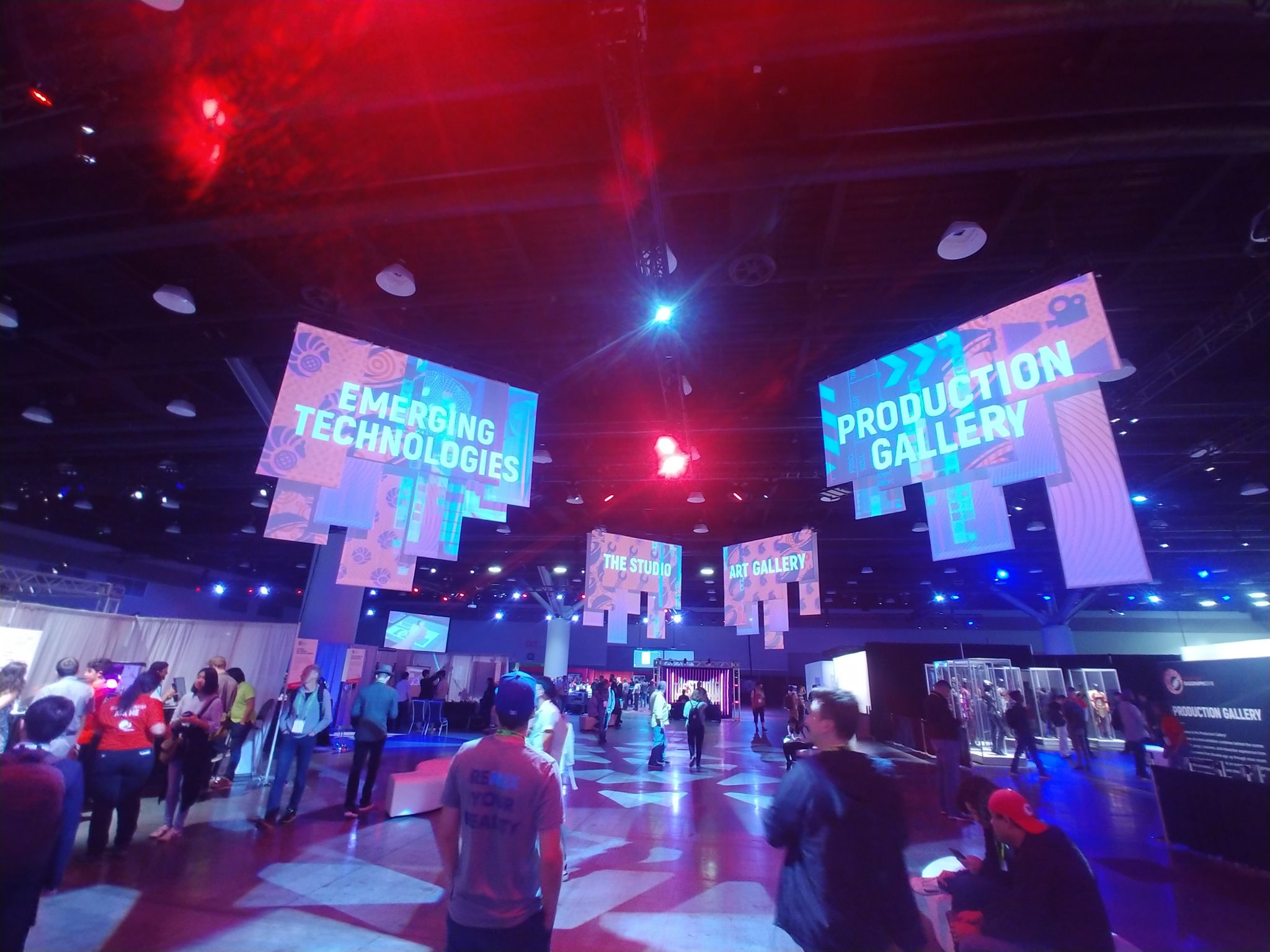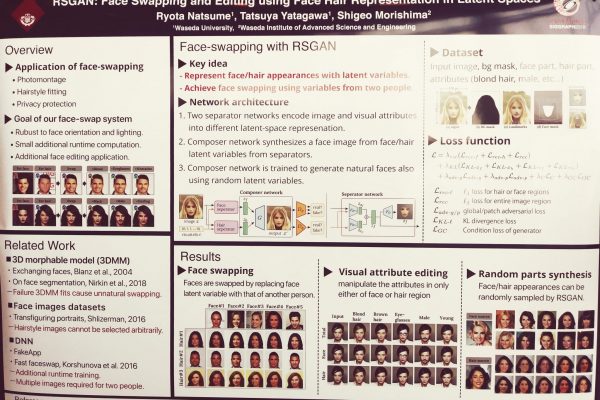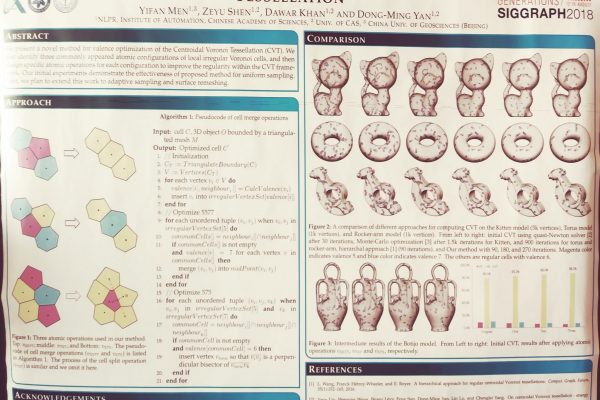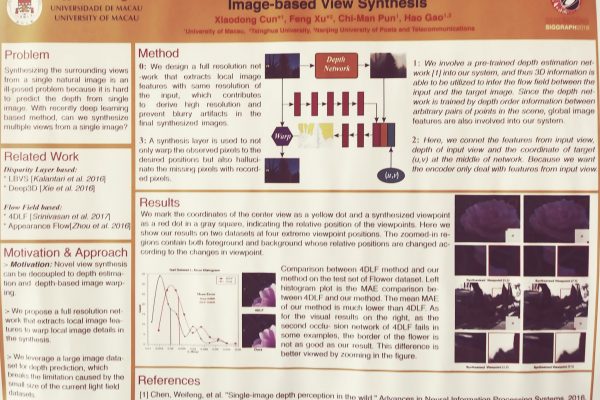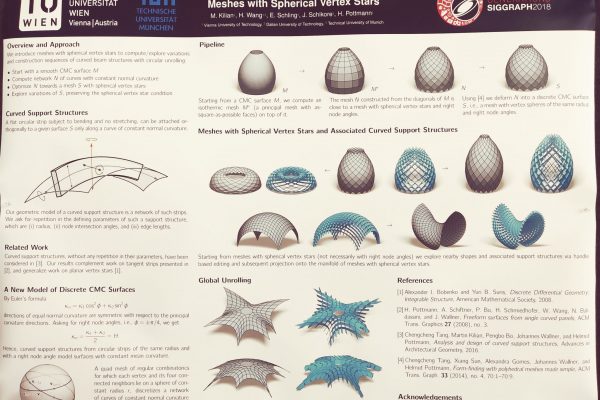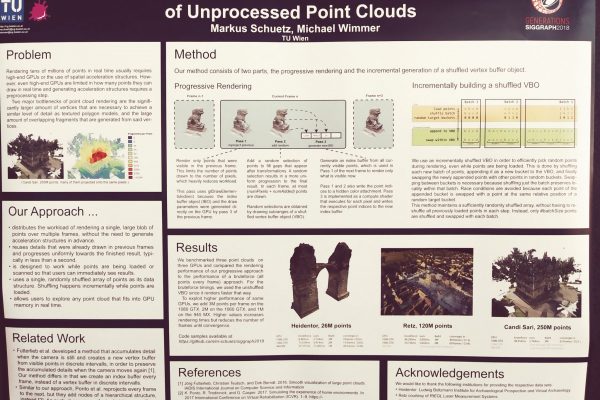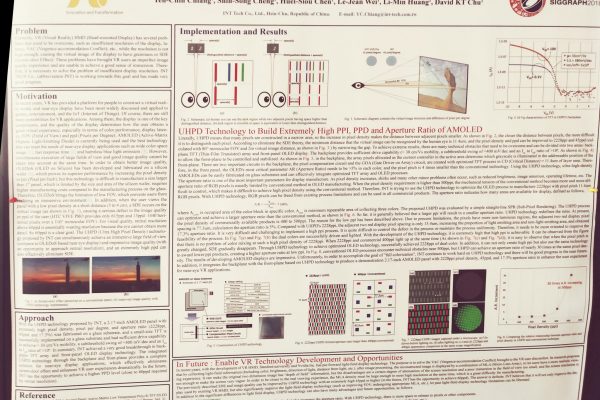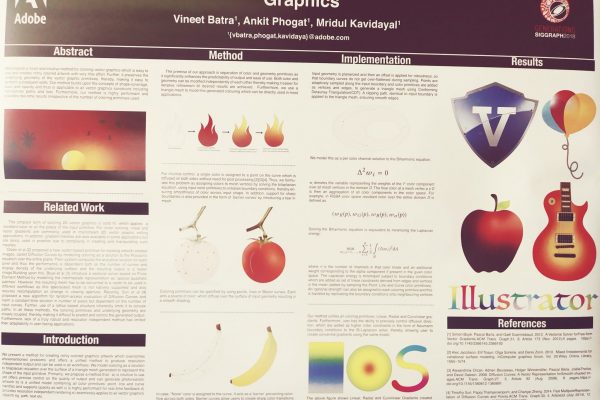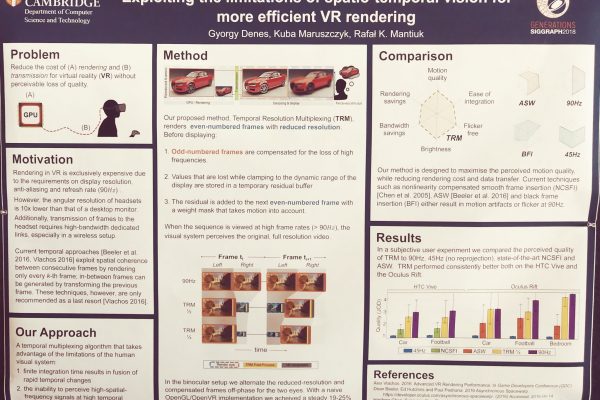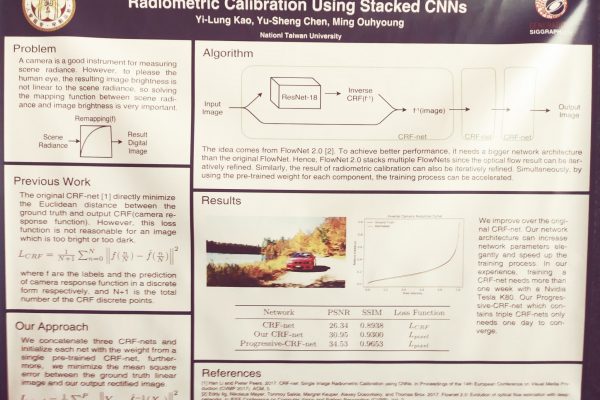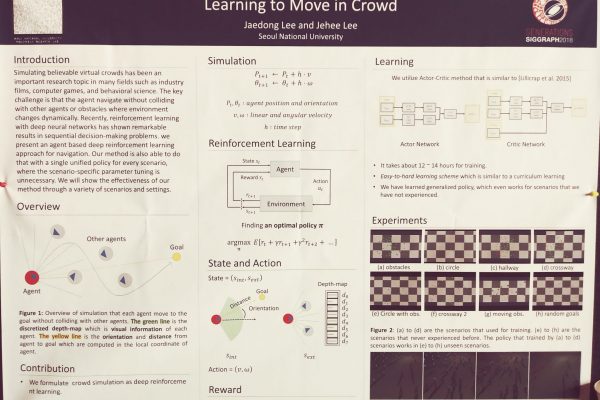ACM SIGGRAPH is a massive annual gathering of the world’s CGI professionals. From real-time game rendering software, to the latest graphics hardware, to the people who put movies like Coco and The Avengers on the big screen, you’ll find them all at this five-day convention.
Since the event’s host city changes every year, we couldn’t wait to take advantage of SIGGRAPH finally returning to Vancouver. Not only did we throw our very own Mixed Reality Mixer to help connect the VR professionals visiting the city, our own team of developers got the chance to take in the demos on the main exhibit floor, as well as watch some excellent talks.
The Breakthroughs of Today
From day one, our schedule was jam-packed with talks, sessions and time on the expo floor. We ended up seeing so much that we decided to condense our learnings down to some bite-sized takeaways. Enjoy!
The view from the line for the VRCADE at #SIGGRAPH2018. The decor and low lighting is quite pleasant. pic.twitter.com/SVEqQxqMxg
— Scout Windsor (@scoutwindsor) August 13, 2018
The NVidia Sessions:
- The two talks we attended were both deep dives on Deep Learning. Specifically, how it relates to content creation and real-time rendering.
- These tech-heavy sessions explored the potential for using machine learning and deep learning to train image and video manipulation algorithms.
- They also dipped into the new Turing GPU architecture, specifically the planned support for DirectML. DirectML is a GPU-based machine learning language that enables devs to offload training work from CPU to GPU, achieving much better performance. Definitely something we’ll be keeping an eye on.
From the expo floor:
- The International Collegiate Virtual Reality Contest brought a ton of out-there ideas to the virtual table, many revolving around haptic feedback for increased immersion. Our favourite demo included an arm-mounted peripheral that simulated the feeling of your arm “extending” out several feet beyond your body, which was mirrored in a VR experience.
Like this one, that you strap to your arm and it senses when you extend it, making it look and feel like your arm extends out like one giant noodle: pic.twitter.com/EXSUOg7uzK
— Eva Hoerth (@downtohoerth) August 14, 2018
- AnimVR by NVRMND invited attendees to create a virtual character and, with the help of their software, imbue it with responsive animations. The result is surprisingly effective, with characters “following” the user with their eyes and even reacting to outside stimulus. Animation possibilities aside, this feels like the perfect virtual pet app for users of any age.
- Web-based VR also made a minor appearance at SIGGRAPH, raising an interesting question in the context of VR games. While it may be one of the least-explored corners of virtual tech, the ubiquity of online gaming surely points to this being an important part of the puzzle.
- Okay, let’s talk about Wrnch AI. Yes, this is the live demo of a real human’s motions being tracked in real time, then mapped to a virtual avatar. Is this the holy grail of full body tracking? The tech may already exist, but what blew us away about Wrnch was how closely it was able to focus in on the human, pulling its motions out of incredibly noisy backgrounds with little trouble. Needless to say, we were impressed, and can’t wait to see the everyday applications that this sort of tech breakthrough will enable.
- And if that wasn’t enough future for you, there were the holograms and the black hole from Imverse. Their demo used multiple Kinect v2 cameras to capture a user’s image holographically using voxels. You were also able to join a 3D scene and learn about black holes from a holographically present physicist, while using an interactive black hole to warp the voxels wherever you moved it! It was an impressive experience, and while the human reconstructions still aren’t perfect, the demo showed how compelling representations of people are in VR, rather than avatars.
Glimpsing an Inspiring Future
One could argue that every single booth, talk and conversation held at SIGGRAPH could be a hint at the astonishing tech we may find at our fingertips one day. But one thing truly stuck us as an inspiring sign of what’s to come: the quality of work, research, and discoveries that are coming from the young minds who are only now entering these industries.
Cue the Poster Sessions. These early-stage research projects were put together by undergrads and other younger students. They may not be ready to present a PhD paper, but still had some complex, diverse ideas to share, and so created a number of “posters.” (Essentially complete abstracts and research projects condensed onto a single large page.) These were then presented and discussed at a number of relevant sessions. Our favourite featured AR-assisted physical deformation of virtual objects in sync with real-world counterparts,
Interested in seeing more? We’ve uploaded photos of a number of other posters for you to check out here.
Young students aren’t the only ones looking to push the future of VR. We got to speak with Timoni West, director of AR/VR research at Unity Labs, about their upcoming virtual UI tool, Editor XR.Editor XR will be a big step forward for Unity VR devs. Essentially, it’s the upcoming VR UI for the Unity editor, and will introduce a new feature where a user can edit miniature scaleable models of their virtual environment. Those edits will then be replicated real-time in the environment itself. Sounds like a great visual to demonstrate in MixCast one day.
Similarly, raising the virtual bar here in Canada is Campbell River Creative Industries. They told us about some super exciting tech developments on Vancouver Island, including a fibre optic network, and a new VR arcade called Headcase. We’ll certainly be visiting soon!
In Conclusion…
Over the years, SIGGRAPH has not only grown in size, but scope. It has expanded to encompass VR in a big way (the Immersive Pavilion featured everything from short films, to games, and all-new VR tech.) It also made room for more commercialised tech, and even some top-notch student research. If next SIGGRAPH will be your first, be sure to come in with a solid agenda of what you want to learn, see and do. You’ll still be drinking from the firehose, but in the best possible way.
Considering the theme this year was Generations, we really felt like we were seeing the many unique generations of technology—future tech, new and emerging, or past tech, trusted and ever-changing—and loved the opportunity to learn from each one.
Siggraph Day 5 timelapse #utsala #siggraph #siggraph2018 pic.twitter.com/m11NzSIduc
— UTS ALA (@UTS_ALA) August 16, 2018

